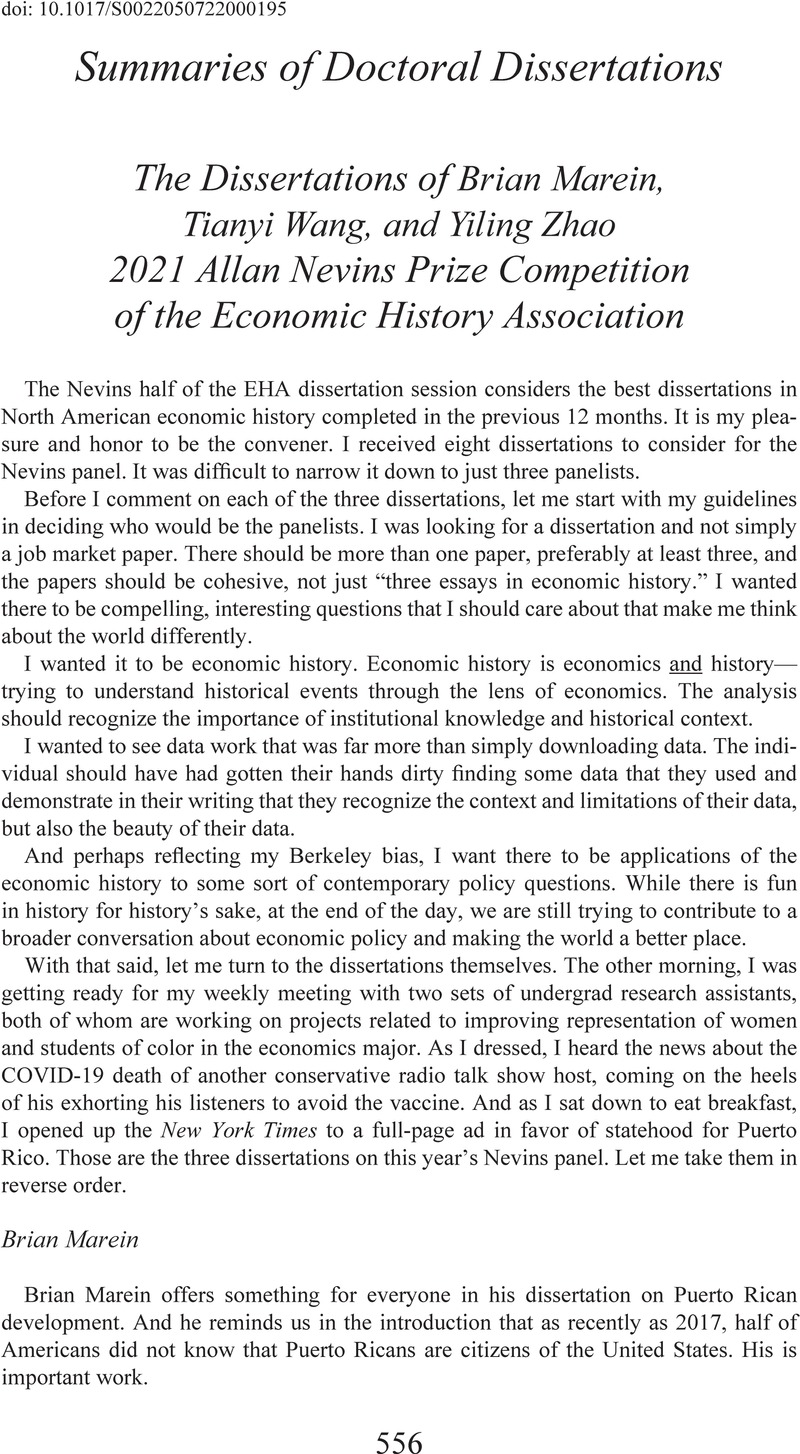No CrossRef data available.
Article contents
Summaries of Doctoral Dissertations
Published online by Cambridge University Press: 19 May 2022
Abstract

- Type
- Dissertation Summary
- Information
- Copyright
- © The Author(s), 2022. Published by Cambridge University Press on behalf of the Economic History Association
References
1 Investments in education were substantial, too, but are not extensively discussed in my dissertation.
2 This chapter is now circulated as “Public Health Departments and the Mortality Transition in Latin America: Evidence from Puerto Rico.”
3 Municipalities, or municipios, in Puerto Rico are U.S. county equivalents.
1 The numbers are computed from the IPEDS survey (Integrated Postsecondary Education Data System, 1986–2016) and the HEGIS survey (Higher Education General Information Survey, 1965–1984).
1 I use the term “public school” in the American sense, meaning state-provided.
1 The long-term legacy of colonial institutions, notably those surrounding land tenure and rural labor relations, is highlighted by current neo-institutionalist approaches; it was also a classic theme in Latin American economic historiography in the 1950s–1970s, which is generally ignored by the recent literature. Two excellent review essays are Bértola, “Institutions,” and Coatsworth, “Structures.”
2 Among economic historians, see Sokoloff and Engerman, “Institutions.” In the development economics literature, Acemoglu, Johnson, and Robinson also described colonial “Argentina” and “Uruguay” as something of an exception in the region, a positive case of “Reversal of Fortune.”
3 The concept of “spatial code” was introduced by Lefebvre, Production. In this dissertation, I think of a spatial code as including a system of land tenure, a preference for certain farming techniques, a prevailing crop repertoire, and a set of agricultural labor relations.
4 Wright, Slavery, 24.
5 The Nieboer hypothesis, in Evsey Domar’s (“Causes of slavery”) version, suggests a trilemma between free peasants, free land, and a non-working landowning elite: two out of those three, but never all three, are to be found in historical agricultural systems.
6 Bates, Coatsworth, and Williamson, “Lost Decades”; cf. Prados de la Escosura, “Lost Decades?.”
7 The general “vent-for-surplus” model was originally developed by Hla Myint, “The ‘Classical Theory’.”
8 See the arguments surveyed (and quantitatively tested) in Taylor, “Latifundia.”
9 Previous landmark analyses are Barrán and Nahum, Civilización, 305–17; Millot and Bertino, Historia económica, 89–102 (who first considered soil quality indicators); and Moraes, “Capitalismo pastor.”
10 Bértola, “Overview.”


